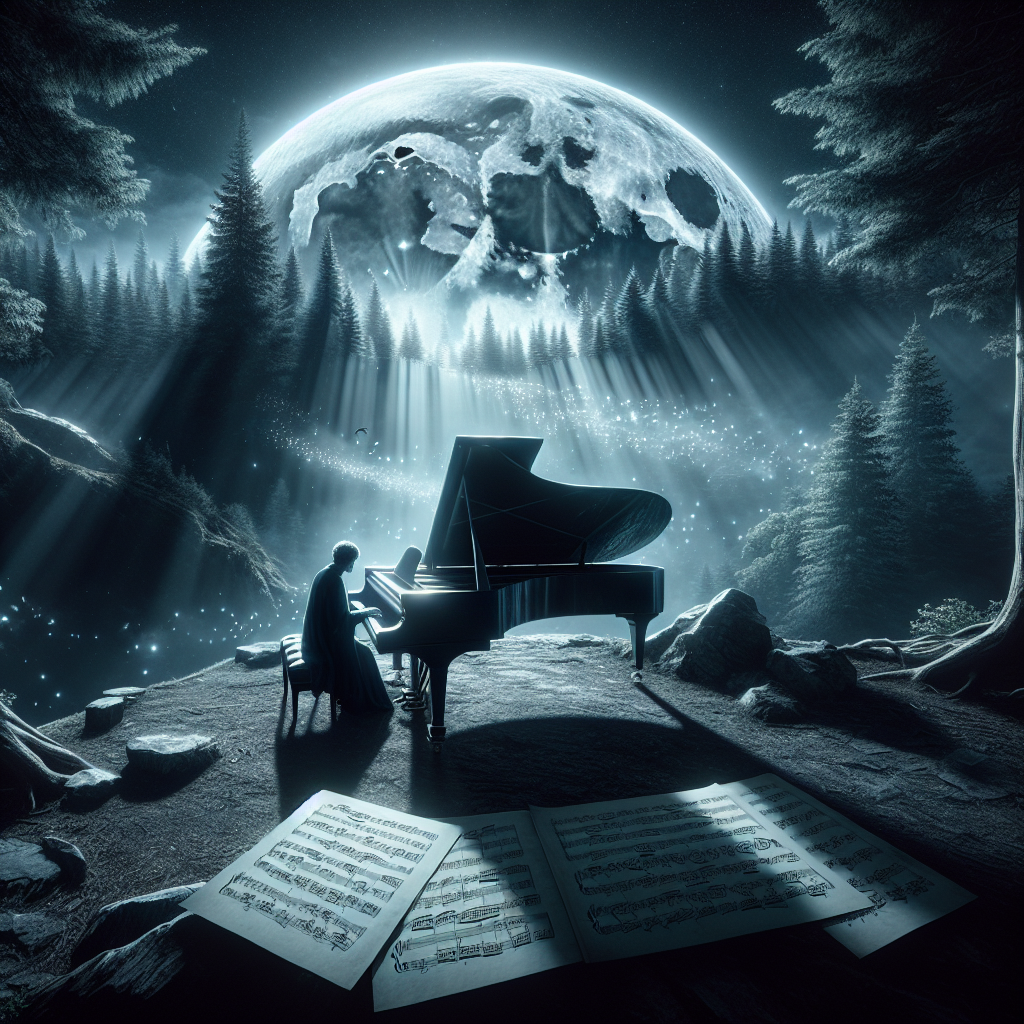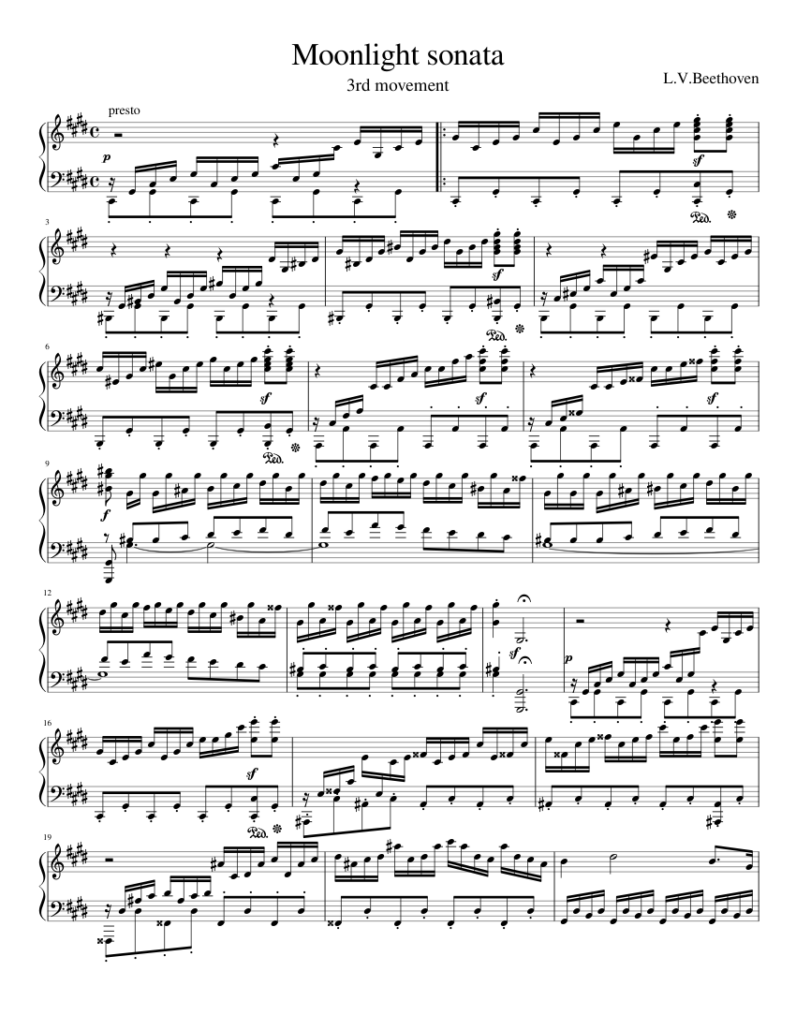How to Play Moonlight Sonata 3rd Movement?
If you’re a pianist, you’ve undoubtedly performed Beethoven’s Moonlight Sonata in its opening movement. Experienced players are eager to tackle the last movement, while novices are eager to play through all three pages. The first movement is easily performed by most, however the third movement is a little trickier! Here are some starting point suggestions, along with a tip to “How to play Moonlight Sonata?”.
See More:
- Benefits of Playing Piano
- How Many Piano Keys Are On A Piano?
- Top 4 Piano App for Free
- How to tune the piano?
- Guide to Controlling Humidity for Pianos
How Beethoven Wrote the Moonlight Sonata?
Beethoven’s “Moonlight” Sonata, Op. 27 No. 2, is a highly sought-after piano piece that dates back to its composition in 1801. With over 170 million views, it is the most listened to piece of Beethoven’s music on YouTube. Perhaps because of the romantic connotation of its title (which was coined after Beethoven’s death) or because it caters to both beginning and intermediate pianists, this piece has been a favorite among piano students for generations.
This has led to a lot of inquiries on the internet, such as those wanting to know how and what motivated Beethoven to write the Moonlight Sonata. While the historical evidence for this may not be as romantic as one might wish, we may nonetheless agree that the Moonlight Sonata appears to represent something both lovely and ambitious.
What’s Hidden Behind Beethoven’s Moonlight Sonata?
We know that you want to start on how to play Moonlight Sonata on piano, but we believe that if you want to play this game well, you need to understand the content and meaning of the game.

There are numerous legends that describe how the Moonlight Sonata came to be. There were rumors going about in the middle of the 19th century of Beethoven’s meeting with a blind girl. That’s why Beethoven was so affected to see the blind child seated next to a piano.
Brighter, crisper tones in the second movement, Allegretto (in D-flat major), reassure and uplift the listener. It seems that the second half serves as a bridge between the first and third sections because it is so brief.
The Moonlight Sonata’s “storm” section is its third section. A passionate feeling is revealed by the quick and forceful sounds. After 1801, as he struggled to come to terms with his hearing loss, Beethoven started to feel hopeless in his heart.
Watch Videos : Moonlight Sonata 3rd Movement
Is Moonlight Sonata hard?
With this part, you will get to know how to play Moonlight Sonata on the piano. We understand that some of the parts are hard, but don’t worry. Practice makes perfect.
The whole sonata can be found on the dipABRSM syllabus, which may be of interest to students who are considering options beyond Grade 8. There are many technical difficulties in the third movement, not the least of which being the quickness and agility needed to perform Presto Agitato.
The Moonlight Sonata will be performed at a BPM of 168–208. With over 52 million views, Valentina Lisitsa’s recording is among the most popular on YouTube. She performs it at a pace of 180–200 beats per minute.
How to play moonlight sonata on piano?
The good news is that it is not as hard as it may seem if you approach learning in the right way! Let’s find out how to play Moonlight Sonata.
Firstly, here is the Moonlight Sonata music sheet:

And now, let’s come to all the steps we figured out to help you in the “How to play Moonlight Sonata piano” topic.
#01 – Play the theme from the first movement slowly.
Beethoven wrote with a great deal of energy. This indicates that he made a link between every sonata movement. Try playing the third movement slowly while singing the theme from the first movement, since you are presumably familiar with it. When you create a “moonlight” atmosphere, use the sustain pedal.
#02 – Play each chord that is broken quickly, pausing after each chord.
All those broken chords you learnt in Grade 1 will work! All you need to do is glide your fingers over the notes. Be natural and take your time. Then give it another go after a brief delay.
#03 – Let’s get straight in practicing
Shut your eyes and visualize yourself playing quickly. Then just play, without thinking.
Beethoven’s first composition after he started to gradually lose his hearing and eventually became fully deaf was the Moonlight Sonata. Beethoven’s music, the music that began the miracles, was created by the sorrow and loss in the work, the prayers, and even the storms. As a result, piano players consistently choose Moonlight Sonata. Hopefully through this article, you already get to know how to play Moonlight Sonata . Follow pianos in the parks to learn more about piano!




Leave a Reply
Want to join the discussion?Feel free to contribute!